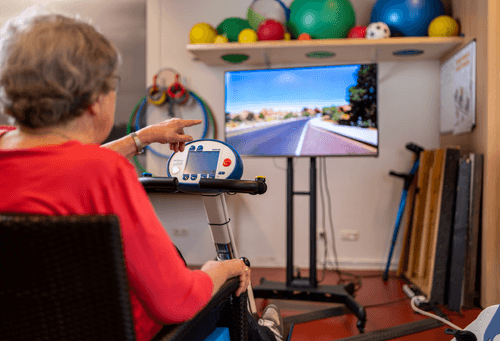Exercise in the workplace: essential in your exercise plan
We spend quite a bit of our lives at work. On average, we work 30 hours a week. Per week we have 168 hours, of which you are awake 112 hours if you sleep 8 hours per night. So that means you spend about 27% of your life in the office. And for a lot of people, this means that they barely move this 27% of the time.
Since COVID, working from home has become incredibly popular, yet by now most people are going back to the office a lot. And not without reason. A nice workplace has a positive impact on people's productivity and well-being (Knight 2010) and it can reduce stress at work. It is seen as an important place to change behavior, and in addition, it is good to talk to your colleagues with some regularity. Earlier studies show that setting up your desk has a positive impact on employee autonomy, relationships between colleagues, commitment to work and sense of well-being (McGuire and McLaren 2009). All reasons to go to the office.
But unfortunately, there is also a downside to this workplace. Nowadays, we sit at the computer more and more for our work, especially people with office jobs. And that is not good for the body at all. Besides complaints such as back and headaches, it significantly increases the risk of diseases. Think diabetes, cancer, obesity and heart disease. In addition, it's not the best choice for your mental health either. Long-sitters experience more stress and are less able to concentrate than people who stretch their legs more often. Every (work) day you sit, you should actually compensate that same day with 60-75 minutes of exercise (Ekelund 2016).
Move regularly
Research shows that regular exercise during work, such as getting up from your desk to get coffee, using a standing desk (with or without a desk bike), walking for a bit, doing a meeting standing up, or taking a walk at lunch, are all good for your physical and mental health. Movement-based breaks provide a sense of well-being for employees as long as it does not come at the expense of productive work time, as that in turn creates a sense of stress for many people. In addition, well-being at work also appears to reduce medical and absence costs
(Baicker et al. 2010).
For example, researchers examined the effectiveness of the UP150 initiative (Invernizzi 2022). This exercise concept was designed specifically for the workplace.The program promotes exercise by adapting the desk layout to make exercise possible and easy, and by offering motivational strategies and exercise technologies to employees. Participants were divided into two groups: the experimental group worked in a UP150-focused work environment and the control group worked in their normal, unadjusted work environment for 8 weeks. The researchers then looked at whether UP150 could improve and maintain participants' physical fitness and well-being. It turned out that it did. Participants reported that the program also reduced the mental strain of their work, improved social relationships and increased motivation in the workplace (Signorini 2022).
Exercise plan
In short, all positive effects of exercise in the workplace. It's definitely worth thinking about your own exercise in addition to an exercise plan for clients. Bike Labyrinth can also contribute to quality of life for you and your colleagues in the workplace. It's easily accessible, routes of varying durations are available, and almost all of our routes are filmed with a beautiful summery sun. So if you need a short break with some distraction, join your clients and enjoy cycling with Bike Labyrinth. You might even motivate your clients to get moving as well. Or bike together so you can both experience relaxation, exercise and good conversation.






